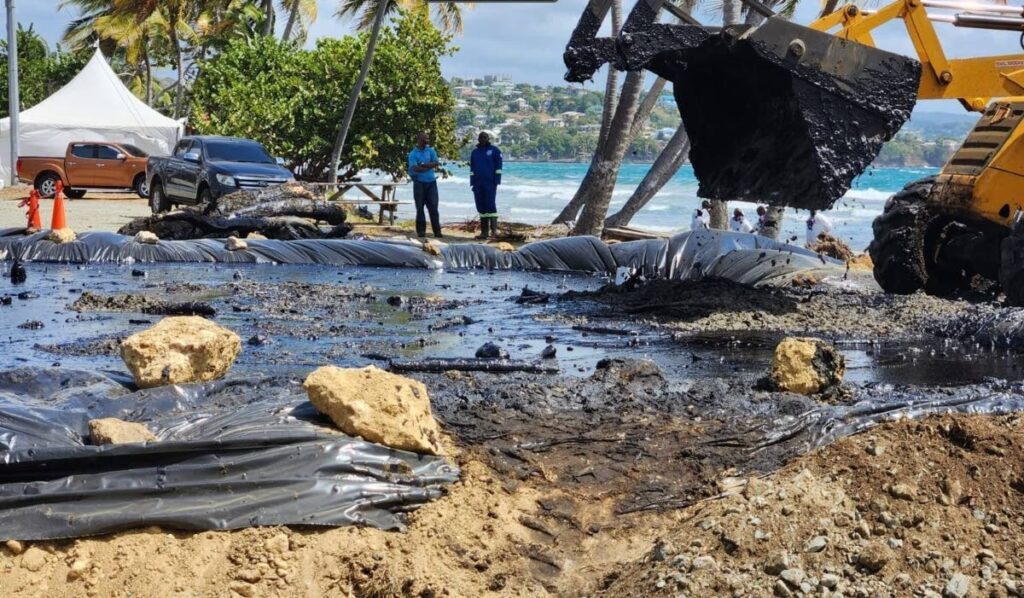Environmentalist: Revise National Oil Spill Contingency Plan

PRESIDENT of Environment Tobago Bertrand Bhikarry believes there is urgent need to revise the National Oil Spill Contingency Plan (NOSCP) to cater specifically for “unwanted events” that could potentially affect the island.
Environment Tobago is a non-governmental, conservation body established in 1996 to safeguard the environmental future of the island.
According to the Ministry of Energy and Energy Industries’ website, the NOSCP, which was approved on January 31, 2013, is designed to “mitigate the impact of oil spills on the environment by setting specific standards for oil spill equipment stockpiles, establishing time frames for oil spill response and increasing collaboration among partner agencies.
The ministry said several measures in the plan were implemented immediately while others began in 2014.
But Bhikarry believes there is need to redo the plan “to include Tobago, specifically, and it has to be in small print so as to detail everything.”
He said although oil spills were “unwanted events it shouldn’t be unplanned for.
“That has to be reflected in the national oil spill policy because we (Tobago) are at more risk that Trinidad. My feeling now is that we should choose the future we want and make a plan,” he told Newsday on February 22.
Bhikarry said early the new THA’s tenure in December 2021, he had spoken to Chief Secretary Farley Augustine about the need to establish a technical advisory committee for south-west Tobago.
He claimed Augustine had promised to do it.
“But that was two years ago. If it was set up he would have had literally a group of people because this is not a one person thing to talk about controlled development. They would have been able to actually plan for contingencies and what we call unwanted or unplanned events.”
Bhikarry said the Tobago Emergency Management Agency (TEMA), which has been at the forefront of the efforts to rid the island of the spill, is basically an “operations” agency.
“But we need planners.”
He feels the clean-up exercise, though commendable, is taking too long.
TEMA director Allan Stewart, meanwhile, said clean-up operations along parts of the south-western Tobago, which have severely impacted by the oil spill, are continuing apace.
The spill occurred after a barge – Gulfstream - capsized in the sea some 200 metres off the coast of the Cove Eco Industrial Park on February 7. At the time it overturned the vessel was being towed by a tugboat – Solo Creed – to Guyana. That vessel is yet to be found.
The oily substance, which is believed to be an unrefined grade of diesel, blackened the waters and shorelines on Tobago’s south-west coast, resulting in the activation of a tier 11 disaster response.
Several ministries, companies, agencies and community groups have since been engaged in a wide-scale clean-up and rehabilitation exercise in Lambeau and surrounding villages.
Stewart said clean-up operations at the Lambeau bridge were intensified on February 22.
“That is a sensitive area because there is still a heavy concentration of the diesel-like substance,” he told Newsday.
Stewart said about six sucker tanks, each carrying 130 barrels, were deployed to the area.
He said attempts are still being made at Canoe Bay to salvage the Gulfstream and plug the leak.
“But more will be said about this in the coming days.”
On February 21, the Ministry of Energy said in a release that Henry Kevin Teichman, CEO of T&T Salvage LLC, led a high-level briefing to discuss strategies to salvage the Gulfstream and contain its hydrocarbon discharge.


Comments
"Environmentalist: Revise National Oil Spill Contingency Plan"